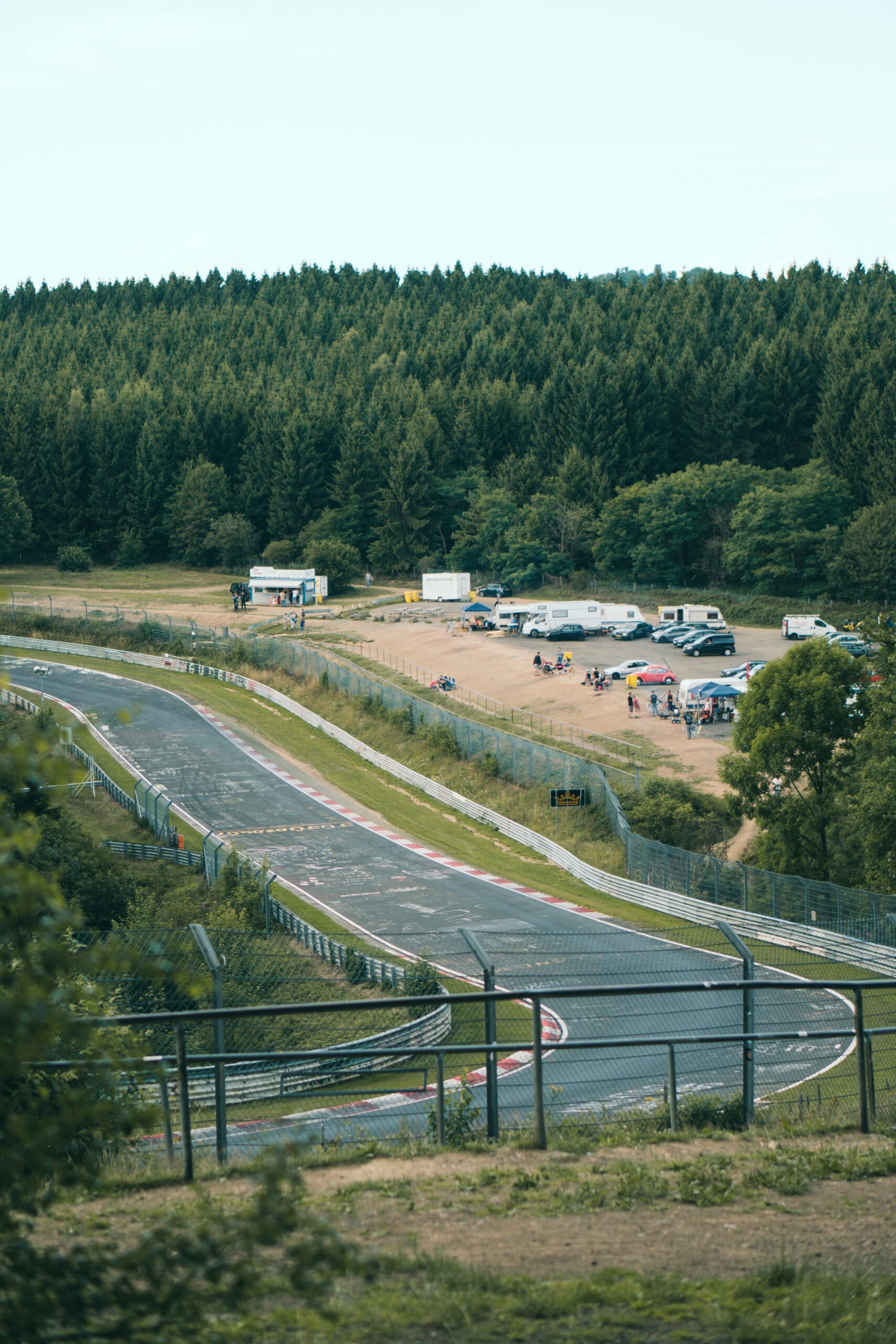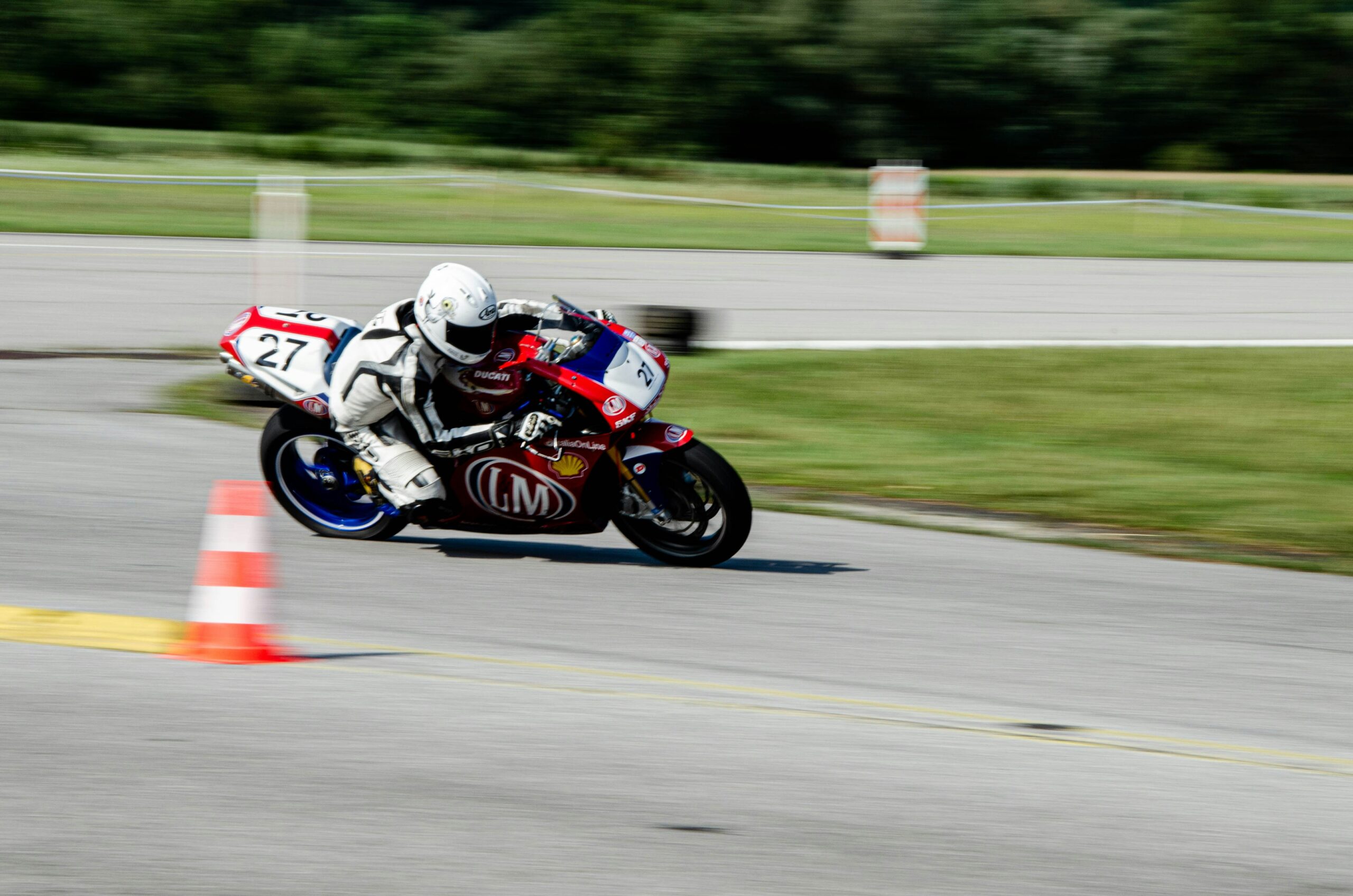Introduction to the Spanish Grand Prix
The Spanish Grand Prix holds a prominent place in the annual Formula 1 calendar, celebrated for its rich history and significant contributions to the sport. First inaugurated in 1913, the race has evolved considerably, becoming a pivotal event that often sets the tone for the rest of the season. Initially held at various locations, the Spanish Grand Prix found a permanent home in 1991 at the Circuit de Barcelona-Catalunya, a track renowned for its challenging layout and technical complexity.
Over the decades, the Spanish Grand Prix has become more than just a race; it is a testament to the enduring appeal of Formula 1 in Spain and across the globe. Its significance is underscored by the fact that it often serves as a critical testing ground for teams, given the circuit’s diverse combination of high-speed straights and intricate corners. This unique blend makes it an ideal venue for teams to evaluate their cars’ performance under varied conditions, thereby influencing their strategies for the rest of the season.
Memorable moments and key milestones have marked the Spanish Grand Prix’s storied history. One such moment was in 2001, when Michael Schumacher secured a dominant victory, showcasing his unparalleled skill and cementing his legacy in the sport. More recently, in 2016, Max Verstappen made headlines by becoming the youngest winner of a Formula 1 race at just 18 years old, a feat that highlighted the emergence of a new generation of racing talent.
The Spanish Grand Prix is not just a race; it is a celebration of speed, strategy, and skill. Its enduring appeal lies in its ability to consistently deliver thrilling races and unforgettable moments, making it a must-watch event for motorsport enthusiasts around the world. As the season progresses, all eyes invariably turn to the Circuit de Barcelona-Catalunya, eager to witness the next chapter in the illustrious history of the Spanish Grand Prix.
The Circuit de Barcelona-Catalunya
The Circuit de Barcelona-Catalunya has been the home of the Spanish Grand Prix since its inauguration in 1991. Located in Montmeló, just a short drive from the vibrant city of Barcelona, this track is renowned for its technical complexity and diverse layout, making it a favorite among drivers and teams alike. The circuit spans 4.655 kilometers and features 16 corners, a mix of high-speed straights, and challenging turns that test the skills and precision of even the most seasoned racers.
One of the key features of the Circuit de Barcelona-Catalunya is its varied layout. The track is divided into three sectors, each presenting unique challenges. The first sector is characterized by a long straight, where cars can reach impressive speeds before navigating the tight right-hander at Turn 1. The middle sector is more technical, featuring a series of medium-speed corners that demand exceptional car balance and driver finesse. The final sector includes the famous Turn 10, a tricky, slow-speed corner that often becomes a critical overtaking spot during races.
Besides its challenging layout, the circuit is known for its excellent facilities. It boasts state-of-the-art grandstands, providing spectators with unobstructed views of the track, and modern paddock areas that cater to the needs of teams and media. The venue also includes ample hospitality suites, making it a popular choice for corporate events and VIP experiences.
The Circuit de Barcelona-Catalunya holds a special place in the Formula 1 calendar, not only for hosting the Spanish Grand Prix but also for its pivotal role in pre-season testing. Each winter, teams flock to the circuit to conduct extensive testing sessions, taking advantage of the track’s varied conditions to fine-tune their cars for the upcoming season. Its proximity to Barcelona adds to its appeal, offering teams and fans the opportunity to explore one of Spain’s most culturally rich and dynamic cities.
In summary, the Circuit de Barcelona-Catalunya is a cornerstone of the Formula 1 world, combining a demanding track layout with top-notch facilities and a prime location near Barcelona. Its significance in both racing and pre-season preparations underscores its status as a premier motorsport venue.
Iconic Moments in Spanish Grand Prix History
The Spanish Grand Prix has been a fixture in the Formula 1 calendar for decades, providing fans with a multitude of iconic moments that have left an indelible mark on the sport’s history. One such unforgettable race took place in 1981 at the Jarama circuit, where Gilles Villeneuve showcased his masterful defensive driving. Despite having a less powerful car, Villeneuve held off four faster competitors for a significant portion of the race, ultimately securing a victory that is still celebrated for its sheer tenacity.
Another defining moment occurred in 1996 when Michael Schumacher, driving for Ferrari, delivered a stunning performance in torrential rain at the Circuit de Barcelona-Catalunya. Schumacher’s skillful handling of the slippery conditions enabled him to clinch his first victory for Ferrari, a triumph that marked the beginning of a dominant era for both the driver and the team.
The Spanish Grand Prix has also witnessed its share of controversies. The 2001 race saw a dramatic incident involving Juan Pablo Montoya and Michael Schumacher. Montoya collided with Schumacher, leading to a heated debate about racing conduct and the responsibilities of drivers during overtaking maneuvers. This incident remains one of the most discussed in the race’s history, illustrating the high stakes and intense rivalries that characterize Formula 1.
In more recent years, the 2016 Spanish Grand Prix stands out as a milestone event. On the first lap, teammates Lewis Hamilton and Nico Rosberg collided, taking both Mercedes cars out of the race. This unexpected turn of events paved the way for a historic victory by Max Verstappen, who, at just 18 years old, became the youngest winner of a Formula 1 Grand Prix. Verstappen’s triumph not only made headlines but also signaled the arrival of a new generation of talented drivers.
These moments, among many others, have cemented the Spanish Grand Prix as a race that consistently delivers drama, excitement, and unforgettable memories. As the sport continues to evolve, fans eagerly anticipate the next chapter in the storied history of this iconic event.
Notable Winners and Records
The Spanish Grand Prix has been a staple in the Formula 1 calendar, witnessing numerous legendary performances over the years. Among the most notable winners is Michael Schumacher, who holds the record for the most victories at this event with six wins. Schumacher’s dominance in the early 2000s is a hallmark of his illustrious career and a testament to his skill and consistency.
Another significant figure in the Spanish Grand Prix history is Lewis Hamilton, who has also showcased remarkable prowess on the Circuit de Barcelona-Catalunya. Hamilton’s strategic acumen and driving excellence have earned him multiple victories, further solidifying his status as one of the sport’s greats.
In terms of fastest laps, the record is held by Max Verstappen, who set an impressive time of 1:18.149 in 2021. This feat underscores Verstappen’s aggressive and skillful driving style, making him a formidable competitor on this circuit.
Pole positions are another area where records have been set. Ayrton Senna, the Brazilian legend, is renowned for his qualifying speed and has secured multiple pole positions at the Spanish Grand Prix. His ability to extract maximum performance during qualifying sessions remains legendary.
Teams have also left their mark on the Spanish Grand Prix. Ferrari, one of the oldest and most successful teams in Formula 1 history, boasts an impressive record at this event. Their strategic brilliance and engineering excellence have led to numerous victories and podium finishes.
Moreover, the Spanish Grand Prix has seen its share of memorable moments, including Fernando Alonso’s home victory in 2006, which was a significant achievement for the Spanish driver and a moment of national pride.
These records and achievements highlight the Spanish Grand Prix as a race where legends are made and history is written. The combination of driver skill, team strategy, and engineering prowess continues to make this event a thrilling spectacle for motorsport fans around the world.
The Impact of Weather on the Race
The Spanish Grand Prix, held at the Circuit de Barcelona-Catalunya, has witnessed a variety of weather conditions that have significantly influenced race strategies, tire choices, and overall race outcomes. The weather in this region can range from hot and dry to unexpectedly wet, creating a complex environment for teams and drivers to navigate.
Historically, temperature has been one of the most critical factors affecting the Spanish Grand Prix. High temperatures can cause increased tire degradation, forcing teams to adopt more conservative strategies to manage tire wear. For instance, during the 2013 race, drivers faced track temperatures exceeding 40°C, leading to rapid tire wear and multiple pit stops. Teams had to be exceptionally strategic about their tire choices, balancing speed with the need to preserve tire life.
Rainfall, although less common in this part of Spain, has also played a pivotal role in certain races. The 1996 Spanish Grand Prix is a prime example, where torrential rain transformed the race into a test of skill and strategy. Michael Schumacher’s remarkable performance in challenging wet conditions allowed him to secure his first victory for Ferrari, demonstrating how adept handling and timely pit stops can turn a race on its head.
Wind conditions at the Circuit de Barcelona-Catalunya can further complicate race dynamics. Strong winds can affect aerodynamics, making the cars more challenging to handle, particularly in the high-speed corners. In 2018, gusty winds during the race weekend added an extra layer of difficulty for the drivers, impacting car stability and requiring constant adjustments to driving techniques and car setups.
Overall, the ever-changing weather conditions at the Spanish Grand Prix necessitate adaptive strategies and quick decision-making. Teams must continuously monitor weather forecasts and be prepared for sudden changes that can significantly influence the outcome of the race. Understanding and anticipating the impact of temperature, rainfall, and wind is crucial for success at this iconic event.
Fan Experience and Local Culture
Attending the Spanish Grand Prix offers a unique and thrilling experience for motorsport enthusiasts. The Circuit de Barcelona-Catalunya, located in Montmelo, is renowned for its excellent facilities and vibrant atmosphere. Fans have a range of ticket options to choose from, including general admission and grandstand seating, each offering distinct perspectives of the race. The grandstands offer reserved seating with exceptional views of key sections of the track, while general admission tickets allow fans to explore various viewing areas around the circuit.
The fan experience is further enhanced by the electric atmosphere that pervades the circuit during the race weekend. The roar of the engines, the cheering crowds, and the sight of the world’s best drivers battling it out on track create an unforgettable ambiance. In addition to the on-track action, fans can enjoy various entertainment zones, merchandise stalls, and food and beverage stands, ensuring a well-rounded experience.
Beyond the circuit, the local culture of Barcelona adds an extra layer of enjoyment for visitors. The city is rich in history, art, and architecture, offering numerous attractions to explore. Fans can visit iconic landmarks such as the Sagrada Familia, Park Güell, and the Gothic Quarter, immersing themselves in the unique Catalonian heritage. The local cuisine is another highlight, with a vast array of tapas, seafood, and traditional dishes like paella available at the city’s many restaurants and markets.
Barcelona is also known for its vibrant festivals and traditions, which often coincide with the Grand Prix weekend. Visitors can experience the lively atmosphere of events such as the Festes de Primavera or the Mercè Festival, enjoying traditional music, dance, and street performances. These cultural experiences provide fans with a deeper connection to the region and make the Spanish Grand Prix a truly memorable event.
Technical Challenges and Strategies
The Spanish Grand Prix is renowned for its technical complexity, posing a myriad of challenges for teams and drivers alike. One of the primary technical hurdles is vehicle setup. The Circuit de Barcelona-Catalunya demands a well-balanced car due to its combination of high-speed corners, long straights, and tight chicanes. Teams must meticulously fine-tune aerodynamics to ensure optimal downforce without compromising top speed. Suspension setup is equally critical, as the track’s varying elevation changes and aggressive curbs require a delicate balance between stiffness and compliance.
Tire management is another crucial aspect at the Spanish Grand Prix. The circuit’s abrasive asphalt and high-speed corners result in significant tire wear. Pirelli, the official tire supplier, often brings its hardest compounds to withstand the rigors of the track. Teams must strategize pit stops effectively to mitigate tire degradation while maintaining competitive lap times. This involves continuous monitoring of tire temperatures and wear patterns, adjusting driving styles, and employing real-time data analytics to make informed decisions.
Fuel strategies also play a pivotal role in the outcome of the race. The Spanish Grand Prix typically features a mix of high and low fuel consumption segments. Teams must calculate fuel loads with precision to avoid running out of fuel while ensuring the car remains competitive throughout the race. Fuel-saving techniques, such as lifting and coasting in certain sections, are often employed to stretch fuel mileage without losing time.
Preparation for the Spanish Grand Prix begins long before the cars hit the track. Teams conduct extensive simulations and wind tunnel testing to refine their setups. Track data from previous years is analyzed to predict performance trends and identify areas for improvement. During practice sessions, teams gather real-time data to validate their simulations and make necessary adjustments. The Spanish Grand Prix, with its demanding nature, serves as a litmus test for the season’s development trajectory, making technical acumen and strategic planning indispensable for success.
Future of the Spanish Grand Prix
The future of the Spanish Grand Prix appears to be both promising and dynamic, with several potential changes on the horizon. Discussions have been ongoing regarding possible modifications to the Circuit de Barcelona-Catalunya, aimed at enhancing driver experience and spectator engagement. These changes may include adjustments to track layout to promote more overtaking opportunities and potentially increase the overall excitement of the race.
From a logistical standpoint, the Spanish Grand Prix’s position in future Formula 1 calendars is a subject of keen interest. While the race has been a staple of the F1 season for decades, the ever-evolving nature of the sport necessitates periodic reassessment of each circuit’s role. The Spanish Grand Prix’s established history and strategic location in Europe, however, make it a strong candidate for continued inclusion in the championship schedule.
Upcoming developments are also anticipated to focus on infrastructure improvements, aimed at enhancing the experience for both teams and fans. This includes upgraded facilities, better accessibility, and expanded hospitality options. Such enhancements not only aim to attract a larger audience but also to provide a more immersive and enjoyable experience for attendees.
The economic and cultural impact of the Spanish Grand Prix on the region cannot be overstated. The event draws significant tourism, filling hotels and restaurants, and providing a substantial boost to the local economy. Additionally, it serves as a platform to showcase Spanish culture and hospitality to a global audience, further cementing its importance beyond just the realm of motorsport.
In summary, the Spanish Grand Prix is poised to maintain its prestigious position within the world of Formula 1. With potential circuit changes, ongoing infrastructure improvements, and its substantial economic and cultural contributions, the race is set to continue being a highlight of the F1 calendar, much to the delight of fans and participants alike.



